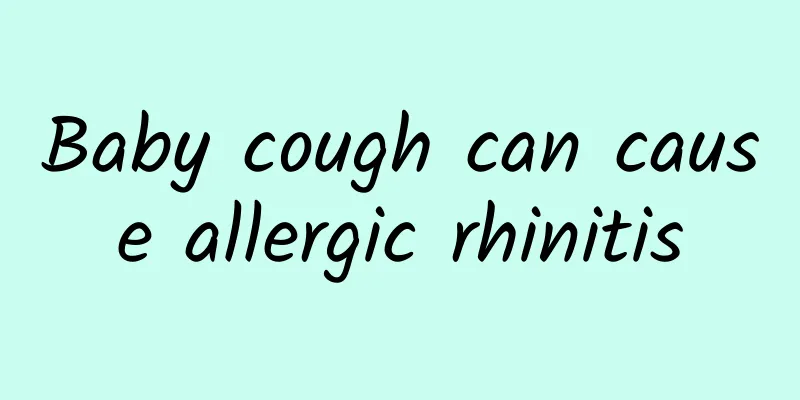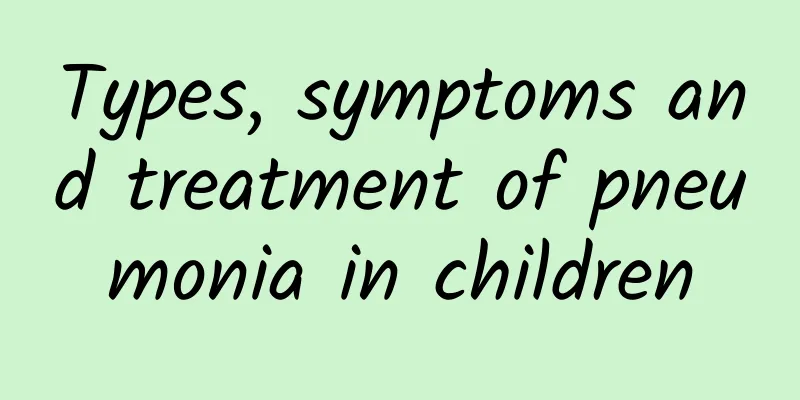What is the normal range of neonatal jaundice? What causes high neonatal jaundice?

|
Neonatal jaundice refers to a disease characterized by yellowing of the skin, mucous membranes and sclera due to the accumulation of bilirubin in the body during the neonatal period (from the time the umbilical cord is tied after the fetus is delivered to 28 days after birth). This disease is divided into physiological jaundice and pathological jaundice. Physiological jaundice in full-term infants appears 2 to 3 days after birth, reaches a peak in 4 to 5 days, and disappears in 5 to 7 days, no later than two weeks; it lasts longer in premature infants, and generally has no other clinical symptoms except for mild loss of appetite. If jaundice appears within 24 hours after birth, does not disappear for 2 to 3 weeks, or even continues to deepen and worsen, or reappears after disappearing, or jaundice begins to appear 2 weeks after birth, it is pathological jaundice. The total serum bilirubin of full-term infants exceeds 205.2μmol/L (12mg/dl), and that of premature infants exceeds 256.5μmol/L (15mg/dl) is called hyperbilirubinemia, which is pathological jaundice. If the indirect bilirubin level in full-term infants exceeds 307.8 μmol/L (18 mg/dl), the chance of developing bilirubin encephalopathy (kernicterus) is high, which can damage the central nervous system and easily leave sequelae. Common symptoms: Physiological jaundice (appears 2 to 3 days after birth, trunk, limbs, feces are yellow, urine is not yellow, generally no discomfort symptoms, lasts for 1 to 2 weeks and then disappears), pathological jaundice (jaundice appears 24 hours after birth, gradually worsens, crying and refusing milk, lasts for 2 weeks, stool may be clay-colored) 1. Physiological jaundice In mild cases, the disease is light yellow and limited to the face and neck, or spread to the trunk. The sclera may also turn yellow and then disappear after 2 to 3 days, and the skin color returns to normal on the 5th to 6th day. In severe cases, jaundice may spread to the head and then the feet, and the vomitus and cerebrospinal fluid may also turn yellow for more than a week. In particular, some premature infants may persist for up to 4 weeks. Their stool is still yellow and there is no bilirubin in the urine. 2. Jaundice color In mild cases, the skin is light-colored, while in severe cases, the skin is darker, but the skin is rosy and yellow with a hint of red. 3. Jaundice location It is more common on the trunk, sclera and proximal limbs, usually beyond the elbows and knees. 4. Newborns Generally good condition, no anemia, no hepatosplenomegaly, normal liver function, no kernicterus 5. Premature Babies Physiological jaundice is more common in full-term infants and may appear slightly delayed by 1 to 2 days. Severe jaundice also disappears more slowly, sometimes lasting up to 2 to 4 weeks. At 12 weeks of gestational age, there is already bilirubin in the amniotic fluid. This is unconjugated bilirubin secreted into the amniotic fluid by the fetal trachea and bronchial tree. Most of the unconjugated bilirubin produced after the destruction of fetal red blood cells passes through the placenta to the maternal circulation for elimination, so newborns do not have jaundice when they are just born. After birth, newborns must process the unconjugated bilirubin, a metabolite of hemoglobin, by themselves. However, glucuronyl transferase takes 3 to 5 days for full-term infants and 5 to 7 days for immature infants to mature. Combined with the various characteristics of bilirubin metabolism in newborns mentioned in the overview, physiological jaundice of newborns occurs. 1. Excessive production of bilirubin Due to excessive destruction of red blood cells and increased enterohepatic circulation, serum unconjugated bilirubin increases. Common causes include: polycythemia, extravascular hemolysis, alloimmune hemolysis, infection, increased enterohepatic circulation, red blood cell enzyme deficiency, abnormal red blood cell morphology, and hemoglobinopathy. 2. Hepatic bilirubin metabolism disorder Due to the poor function of liver cells to absorb and bind bilirubin, serum unconjugated bilirubin increases. Common causes include: hypoxia and infection, Crigler-Najjar syndrome, Gilbert syndrome, Lucey-Driscoll syndrome, drugs (such as sulfonamides, salicylates, indomethacin, lanolin, etc.). 3. Bile excretion disorder Impairment in the excretion of conjugated bilirubin by hepatocytes or obstruction of the bile duct can lead to hyperconjugated bilirubinemia, but if accompanied by impaired hepatocyte function, unconjugated bilirubin may also increase. Common causes include: neonatal hepatitis, congenital metabolic defects, syndrome, and bile duct obstruction. (1) Fetal jaundice is often caused by the mother being attacked by dampness and heat, which affects the fetus. Therefore, during pregnancy, the mother should pay attention to eating in moderation, not eating raw or cold food, not being too hungry or too full, and avoid drinking alcohol and spicy food to prevent damage to the spleen and stomach. (2) If a woman has given birth to a baby with fetal jaundice, she should take preventive measures and take Chinese medicine on time when she becomes pregnant again. (3) After the baby is born, the scleral jaundice should be closely observed. If jaundice is found, it should be treated as soon as possible. The color change of jaundice should be observed to understand the progress of jaundice. (4) Pay attention to observe the systemic symptoms of infants with fetal jaundice, such as lethargy, drowsiness, difficulty sucking milk, restlessness, strabismus, limb rigidity or convulsions, etc., so as to detect and treat seriously ill children in a timely manner. 1. Light therapy It is a simple and effective method to reduce serum unconjugated bilirubin. The newborn is placed in a phototherapy box, with both eyes protected with black eye masks to avoid damaging the retina, the perineum and anus covered with diapers, and the rest of the body exposed. Use single-sided or double-sided light for 2 to 48 hours (usually no more than 4 days), and the treatment can be stopped when the bilirubin drops below 7 mg/dL. 2. Exchange blood therapy Blood transfusion can effectively reduce bilirubin, replace sensitized red blood cells and alleviate anemia. However, blood transfusion requires certain conditions and may also produce some adverse reactions, so the indications should be strictly followed. 3. Medication Supply albumin, correct metabolic acidosis, liver enzyme inducers (such as phenobarbital), and use intravenous immune globulin. 4. Diet therapy Prescription 1: 0.5g cicada molt, 5g mung bean Preparation and usage: decoction Indications: Neonatal jaundice Recipe 2: Fresh mushrooms or sweet potatoes Preparation and Usage: Cooking and soup. Edible. Indications: Neonatal jaundice, Yin-Yellow syndrome Prescription 3: 3g each of winter melon peel and corn leaves Preparation and usage: decoction Indications: Neonatal jaundice 5. Probiotic therapy Statistics show that 80% of premature babies and 60% of full-term babies will have jaundice, and the yellow race is a high-risk group for neonatal jaundice. Under normal circumstances, it will disappear on its own one week to ten days after birth for full-term babies, but it will last for more than three weeks for premature babies. At this time, mothers can give their babies some Mommy Love probiotics to help intestinal peristalsis, increase bilirubin excretion, and eliminate jaundice faster. 1. Drink plenty of water; 2. It is advisable to stop breastfeeding and switch to formula milk; 3. It is advisable to increase sugar water intake appropriately. avoid: 1. Staple food other than formula milk; 2. Nutrients other than breast milk and formula milk. |
>>: What is tics? What are the causes of tics?
Recommend
Causes of diarrhea in children include
The causes of pediatric diarrhea mainly include g...
How much does it cost to check for eczema in children?
Every baby will have more or less eczema on the b...
Is there a good hospital for polio?
Polio is a very scary disease. Many people wonder...
What are the treatments for muscular dystrophy?
Muscular dystrophy is more common in life and has...
Does hand, foot and mouth disease affect pregnancy?
Does hand, foot and mouth disease affect pregnanc...
What medicine is good for children with diarrhea and vomiting? These anti-emetic and anti-diarrhea medicines are very effective
Once a child has diarrhea and vomiting, parents m...
What is the difference between pneumonia and the common cold? Five common symptoms of pneumonia in children
Pneumonia is a disease we are familiar with, and ...
How to treat patent ductus arteriosus in newborns
Patent ductus arteriosus (PDA) is a neonatal hear...
What does jaundice look like?
Jaundice first causes a yellow discoloration of t...
What causes severe pseudohypertrophic malnutrition?
Severe pseudohypertrophic dystrophy is caused by ...
What are the nursing measures for children with pneumonia? How to tell if a child has pneumonia
With the arrival of autumn, the temperature diffe...
What medicine can adults take to reduce jaundice? Are Chinese and Western medicine effective in treating jaundice?
If an adult has jaundice, then there must be some...
Causes of recurrent fever in children with pneumonia
The causes of repeated fever due to pneumonia in ...
What Chinese medicine should I take for patent ductus arteriosus
What Chinese medicine can be taken for patent duc...
What is the most serious danger of breast milk diarrhea?
What is the most serious harm of breast milk diar...









